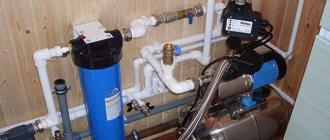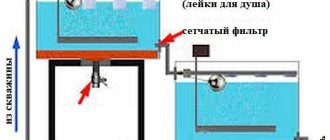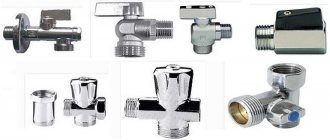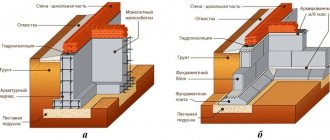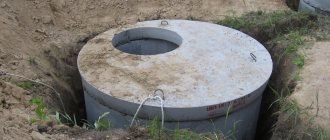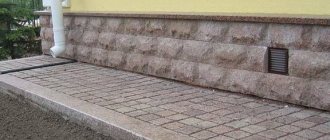To regulate or not - how to determine?
In the case when the equipment is purchased assembled, it is necessary to ensure that the pressure in the pumping station is within the acceptable range.
Standard factory settings range from:
- inclusions – 1.5-1.8 atm.;
- shutdown – 2.5-3 atm.
Next, it remains to check whether such parameters suit the family.
They also change the system parameters if they begin to feel discomfort while using the water supply . A consumer who is comfortable with medium pressure for washing dishes and taking a shower will choose a low threshold for turning on the engine.
When a person actively uses a hydromassage device and wants the bathtub and washing machine to fill with water as quickly as possible, he needs intensive operation of the station with frequent turning on of the motor.
If the pump turns on when the tap is opened and turns off only when it is closed, this indicates that there is no additional voltage in the system . Air has either escaped from the accumulator, or the rubber bulb (membrane) in it has been ruptured.
Pump station pressure switch
The sensor automatically regulates the process of pumping water in the system. It is the pressure switch that is responsible for turning the pumping equipment on and off. It also controls the level of water pressure. There are mechanical and electronic elements.
Mechanical relays
Devices of this type are distinguished by a simple and at the same time reliable design. They fail much less often than their electronic counterparts, because in mechanical relays there is simply nothing to burn out. Adjustment occurs by changing the spring tension.
Mechanical pressure switch is regulated by spring tension
A mechanical relay includes a metal plate where the contact group is fixed. There are also terminals for connecting the device and springs for adjustment. The lower part of the relay is reserved for the membrane and piston. The design of the sensor is quite simple, so there should not be any serious problems with independent disassembly and damage analysis.
Electronic relays
Such devices attract primarily due to their ease of use and their accuracy. The pitch of an electronic relay is noticeably smaller than a mechanical one, which means there are more adjustment options. But electronics, especially budget ones, often break down. Therefore, excessive savings in this case are not advisable.
Electronic water pressure switch
Another clear advantage of an electronic relay is the protection of equipment from idling. When the water pressure in the main is minimal, the element will continue to work for some time. This approach allows you to protect the main components of the station. Repairing an electronic relay on your own is much more difficult: in addition to technical knowledge, you need a specific tool. Therefore, it is better to leave diagnostics and maintenance of the sensor to professionals.
Device characteristics
Depending on the station model and its type, the device can be located either inside the housing or mounted outside. That is, if the equipment comes without a relay, or its functionality does not suit the user, then it is always possible to select the element in a separate order.
The sensors also differ in the maximum allowable pressure. A good half of the classic relays are set to 1.5 atm to start the system and 2.5 atm to deactivate it. Powerful household models have a threshold of 5 atm.
When it comes to an external element, it is extremely important to take into account the characteristics of the pumping station. If you operate with too high a pressure, the system may not be able to withstand it, and as a result, leaks, ruptures and rapid wear of the membrane will appear. Therefore, it is so important to adjust the relay with an eye to the critical indicators of the station.
Features of work
Let's look at the principle of operation of the device using the example of one of the most common relays for pumping stations - RM-5. You can also find foreign analogues and more advanced solutions on sale. Such models are equipped with additional protection and offer expanded functionality.
PM-5 includes a movable metal base and a pair of springs on both sides. The membrane moves the plate depending on the pressure. Using the clamping bolt, you can adjust the minimum and maximum values at which the equipment turns on or off. RM-5 is equipped with a check valve, so when the pumping station is deactivated, water does not flow back into the well or well.
You can also find factory and amateur modifications of the RM-5 on the market. The relays are amplified and supplemented with some protective elements and functionality.
Step-by-step analysis of the operation of the pressure sensor:
- When the tap is opened, water begins to flow from the tank.
- As the liquid in the pumping station decreases, the pressure gradually decreases.
- The membrane acts on the piston, and it, in turn, closes the contacts, including the equipment.
- When the tap is closed, the tank is filled with water.
- As soon as the pressure reaches maximum values, the equipment turns off.
The frequency of operation of the pump depends on the existing settings: how often it will turn on and off, as well as the pressure level. The shorter the interval between startup and deactivation of the equipment, the longer the main components of the system and the entire equipment as a whole will last. Therefore, proper adjustment of the pressure switch is so important.
But it’s not just the sensor that affects the operation of the equipment. It happens that the device is configured correctly, but other elements of the station negate the operation of the entire system. For example, the problem may be due to a faulty engine or clogged communications. Therefore, it is worth approaching the inspection of the relay after diagnosing the main elements, especially when it comes to mechanical sensors. In a good half of cases, to eliminate problems with pressure dispersion, it is enough to clean the relay from accumulated dirt: springs, plates and contact groups.
What parameters should I set the water supply station to?
When the system is first started, the pressure gauge readings are remembered at the moments when the pump is turned on and off. Look at the product data sheet for the maximum pressure values in the water supply system. Typically they are in the range of 1.5-3 bar.
If you decide to change the settings, you first need to understand whether the pressure needs to be reduced or increased. In order for water to flow out of the taps more intensively, the shut-off pressure should be increased, and vice versa.
Guidelines for determining the new operating range of the pressure gauge:
- the maximum volume of water that happens to be used;
- previous pressure;
- pipe diameter;
- number of pump connections per hour.
Approximate fluid consumption from different consuming devices:
- washbasin - 360 kg/h;
- shower - 600 kg/h;
- toilet - 250 kg/h;
- washing machine - 600 kg/h;
- dishwasher - 500 kg/h;
- irrigation system - 1000 kg/h.
Having calculated the expected water flow, the easiest way is to use the table below to determine the pressure value at which to start regulating:
The pump activation pressure must be no less than 110% of the air pressure in the accumulator.
Setting and adjusting pressure
To independently configure the relay in question, you do not need to have any special knowledge of plumbing. It will take quite a long time to figure out how to cover a house with siding or install SIP panels according to the rules. There are much more nuances of work there. With the adjustment of the pressure switch of the pumping station, everything is much simpler. You just need to perform five actions in sequence.
To set up the water pressure switch you need to:
- Turn off the power to the pump, and then drain the water from the cold water pipeline.
- Turn on the hydraulic pump and record the pressure gauge readings when the relay turns off (this is the value of the lower threshold set by the large spring).
- Open the water tap farthest from the pumping station and monitor the numbers on the pressure gauge when the pump turns on again (this is the upper threshold, adjusted by a small spring).
- If the pressure in the open tap when starting the hydraulic pump was too low, then you need to increase the shut-off pressure by tightening the nut on a large spring. If the pressure is too strong, on the contrary, it should be slightly weakened.
- Using a small spring, the delta between the upper and lower thresholds is set within 1.5–2 atmospheres.
We measure the pressure gauge and adjust the relay nuts
To complete the adjustment of the pressure switch, water is completely drained from the system again, and then the station is connected to the network. If everything is configured correctly, then the pressure in the taps should be satisfactory. Everything is extremely simple. The choice of building materials for the house and the planning of a rectangular plot of 15 acres will take a lot of time. Setting up the pressure switch is done in literally half an hour.
Watch the video about adjustment
Step-by-step instructions on how to adjust it yourself
The setup is carried out with the power turned off. To check the result, the station is connected to the network.
Tools
The system is regulated by setting the relay. You will need a simple tool for the job:
- socket or open-end wrench;
- screwdriver.
Preparation
The pressure switch is located in a black box next to the pressure gauge.
The principle of its operation is to close and open electrical contacts. Therefore, first:
- Turn off the power supply.
- Unscrew the screw located in the cap with a screwdriver.
- Remove the casing from the device.
Process
Under the relay cover there are two springs: large and small. The pressure in the water supply acts on them through a membrane. The 2 relay positions depend on the tension of the springs.
steps :
- Tightening the nut on the large spring increases the release pressure. Select the direction of rotation of the nut. 1 turn of the nut changes the value of the lower pressure gauge reading by approximately 0.4 bar (1 atm. ≈ 1 bar). Having loosened or tightened the spring by eye, turn on the system and take readings from the monitoring device.
- If the previous actions did not lead to the desired result, continue adjusting the large spring. After a successful attempt, they move on to setting up a small spring.
- This spring sets the difference between the lower and upper readings of the pressure gauge of working equipment. Changing the characteristic it regulates requires approximately 2 times less revolutions than adjusting a large spring to the same value. Compressing the small spring increases the operating range of the system when the engine is off. The control results are checked similarly to the previous case, under real plant operating conditions. Now you can immediately check the lower and upper values of the pressure gauge.
The gap between the on and off pressures should not be less than 1 atmosphere.
After setting the pressure gauge control values, it is recommended to ensure that the pump starts no more than 30 times per hour.
Relay operating principle
The main element of the pressure switch can be called a group of contacts mounted on a metal base. It is this part that turns the device on and off. A large and small spring is located next to the contacts; they regulate the pressure inside the system and help in deciding how to increase the water pressure in the pumping station. A membrane cover is attached to the lower part of the metal base; under it you can directly see the membrane and the metal piston. The entire structure is covered by a plastic cap.
To understand how to properly set up a pumping station, you need to know that the pressure switch works according to the following scheme:
- When you open the tap, water from the storage tank flows to the collection point. In the process of emptying the container, the pressure begins to gradually decrease, and accordingly, the degree of pressure of the membrane on the piston decreases. The contacts close and the pump starts working.
- While the pump is operating, the taps at the dispensing points can be open, at which time water is supplied to the consumer. When the tap is closed, the hydraulic tank begins to fill with water.
- An increase in the water level in the tank leads to increased pressure in the system, which begins to put pressure on the membrane. It begins to put pressure on the piston, which opens the contacts and stops the pump.
A properly adjusted water pump pressure regulator ensures normal frequency of switching on and off of the pumping station, normal water pressure and equipment service life. Incorrectly set parameters cause continuous operation of the pump or its complete stop.
Do I need to repeat the procedure?
It may be necessary to revise the adjusted parameters only if the operating mode of the equipment changes.
The following situations may force you to do this:
- change in the number of family members;
- transfer of the installation along with the house or cottage to new residents;
- installation of a hydraulic accumulator of a different volume.
In order to maintain stable operation of the system in accordance with the settings, the amount of air in the storage tank is checked once a quarter.
Main problems and causes
Various factors can damage a household pumping station, including damage to the integrity of the hydraulic tank or pipes, leakage of water or air, and the entry of various impurities into the system.
You can intervene in the operation of the pumping station in the event of problems with its operation in the following cases:
- Sand or other impurities have entered the system. This may cause corrosion and reduced performance. You can prevent clogging of the system by using various filter elements to purify water.
- Reduced air pressure in the system. This phenomenon leads to frequent operation of the pump and a decrease in its service life. Regular measurement of air pressure and setting up a pumping station if necessary helps to avoid such troubles.
- Violation of the tightness of joints in the suction pipeline. As a result, the engine is constantly running, but water is not pumped.
- Incorrect adjustment of the hydrophore causes a lot of inconvenience and can cause a malfunction of the pumping station.
Regular inspection and preventive maintenance ensure the service life of pumping equipment. It is important to remember that before adjusting the pressure at the pumping station, the pumping station must be disconnected from the power supply and the water drained.
The design and principle of operation of the relay
Prices for pumping stations
The pumping station is quite compact and has a simple design. The relay itself consists of several elements.
Table. Components of a pressure switch.
Factory settings do not always meet the wishes of consumers; therefore, it is very often necessary to set the parameters yourself.
Problems and solutions
- Why does the Gilex pumping station not maintain pressure in the accumulator?
Here is a list of possible causes of the malfunction, typical for devices from all manufacturers:
- Absence, contamination, incorrect installation or malfunction of the check valve on the suction pipe or at the water supply inlet. The arrow on the valve body should point towards the pump, and the pump itself should allow water to flow in only one direction;
- Lack of air with excess pressure in the air compartment of the membrane tank. To verify the absence or presence of this malfunction, press the nipple rod. If neither air nor water comes from there, the hydraulic accumulator simply needs to be pumped up;
- Hydraulic accumulator membrane rupture. In this case, water begins to drip from the nipple when you press its rod. The membrane is replaced with a new one after turning off the water and opening the receiver tank;
- The pump power is not enough to create a pressure corresponding to the settings of the automatic relay. A sign of this problem is continuous operation of the pump without shutdowns. The problem is resolved by adjusting the relay;
- Water leaks (primarily leaks from flush tanks in toilets). In the event of leaks, the pump is periodically turned on without water being drawn through the mixers. The problem can be resolved by adjusting, repairing or replacing the fill or drain valves in the tanks.
- Why does air get into the water supply system with a pumping station?
The probable cause is a leak in the suction pipe (rupture or loose connection to the pump suction pipe or check valve). The problem is eliminated by sealing the connections or replacing the pipe.
Accumulator pressure
Water pressure switch for pump
Understanding how a hydraulic accumulator works will help you better cope with self-tuning of control equipment.
There are two types of hydraulic tanks: with a rubber insert resembling a pear, or with a rubber membrane. This element divides the container into two non-communicating parts, one of which contains water, and the other contains air.
Inside the hydraulic tank there is a rubber pear-shaped insert or rubber membrane. The pressure in the hydraulic tank can be adjusted by pumping or bleeding air
In any case, they work approximately the same. Water enters the tank, and a rubber insert presses on it to ensure the movement of water through the plumbing system.
Therefore, there is always a certain pressure in the hydraulic tank, which changes noticeably depending on the amount of water and air in the tank.
In order to measure the air pressure in the hydraulic tank before setting the relay, you should connect a pressure gauge to the nipple connection provided on the device body
There is usually a car nipple on the tank body. Through it, you can pump air into the hydraulic tank or bleed it to adjust the operating pressure inside the tank.
When connecting the pressure switch to the pump, it is recommended to measure the current pressure in the hydraulic tank. The manufacturer sets the default value to 1.5 bar. But in practice, some of the air usually escapes, and the pressure in the container will be lower.
To measure the pressure in the accumulator, use a regular car pressure gauge. It is recommended to choose a model with a scale with the smallest gradation step. Such a device will allow for more accurate measurements. It makes no sense to measure pressure if it is not possible to take into account one tenth of a bar.
In this regard, it makes sense to check the pressure gauge that is equipped with an industrial pumping station.
Manufacturers often save money and install inexpensive models. The accuracy of measurements using such a device may be questionable. It is better to replace it with a more reliable and accurate device.
When choosing a pressure gauge for a pumping station or a pump with a hydraulic tank, you should pay attention to mechanical models with an accurate gradation scale
Mechanical car pressure gauges do not look very presentable, however, judging by the reviews, they are much better than newfangled electronic devices. If, nevertheless, the choice is made in favor of an electronic pressure gauge, you should not save. It is better to take a device made by a reliable manufacturer than a cheap plastic craft that does not provide accurate data and can break at any time.
Another important point is that the electronic pressure gauge requires power supply, you will have to monitor this. Checking the pressure in the hydraulic tank is very simple.
The pressure gauge is connected to the nipple and the readings are taken. Normal pressure is considered to be between one and one and a half atmospheres. If the pressure in the hydraulic tank is too high, the water supply in it will be less, but the pressure will be just fine.
This diagram clearly shows the procedure for connecting a pressure switch and pressure gauge to a submersible pump and hydraulic tank in order to automate the operation of pumping equipment
It should be remembered that too high pressure in the system can be dangerous. In this case, all components of the water supply system constantly work under increased load, and this leads to rapid wear of the equipment. In addition, in order to maintain increased pressure in the system, you have to pump water into the tank more often, and therefore turn on the pump more often.
This is also not very useful as it increases the likelihood of breakdowns. When setting up a system, a certain balance is required. For example, if the pressure in the accumulator is too high or too low, it can damage the rubber gasket.
The addition of a pressure switch with a five-way fitting and a pressure gauge transforms the device into the category of automation units
The union nut makes it much easier to connect the device in hard-to-reach places
The design uses a five-way fitting that connects to the relay and has 3 more threaded outputs
Which pump to choose to increase water pressure in an apartment or private house
Installing a pump without additional functions is the simplest option. If this allows you to solve the problem of increasing water pressure in the house, then you should choose it.
The high pressure water pump can be with a dry or wet rotor.
1. Glandless rotor pumps
– the most compact, silent and easy to install. They are inserted sequentially in front of the consumer or water collection point. Unpretentious to voltage changes. They are lubricated by the pumped liquid, so there is no need for additional lubrication.
Along with the advantages, there are also disadvantages. Low power is predetermined by its small size and lack of a lubrication system. The rotor axis of the electric motor must be positioned only horizontally. This imposes some restrictions on installation possibilities or additional bends in the water supply system.
2. Dry rotor pumps
very different in appearance from its “wet” counterparts. The rotor is moved to the side and requires additional fastening. A separate air cooling system has its own fan on the impeller axis and creates additional noise during operation. More space is required for installation and convenient placement of the pump. However, it is capable of increasing the water pressure in the system much more.
Higher power and performance, as well as high performance characteristics, place this type of pump at a higher level. It is capable of serving several consumers simultaneously and at the same time increasing the pressure in the system to the required level.
A dry rotor, as the name suggests, requires special regular lubrication of its components. The pump must be installed in an accessible and convenient location for maintenance. Increased noise from the cooling fan suggests choosing a remote installation location.
The devices described above, regardless of the type of rotor, are very similar to circulation pumps built into a heating system.
Read material on the topic: Circulation pump for heating: how to choose and what to consider
Circulation pumps allow you to increase the pressure and circulation rate of the coolant in an autonomous heating system. Their main feature is that they work continuously while the heating system is functioning. The only exceptions are pumps built into heating boilers. They operate only when the coolant is heated and turn off with a short delay when heating is complete. Despite continuous operation, they operate in a more gentle manner. Their main task is not to increase pressure, but to increase the speed of fluid passage.
There are two ways to solve the pump control problem:
- Manual control is a cheap, but not the most convenient option. Manually turning it off and on does not avoid the so-called human factor. Forgetfulness and inattention are typical for many. There are specific consumer devices for which it is impossible to use manual control. For example, a dishwasher. It turns the water supply on and off according to a program that cannot be monitored by humans.
- A more advanced solution is an automatic pump controlled by a flow sensor. It is turned on by a sensor signal at the moment the water consumer tap opens. It also controls the presence of water at the inlet. If the water supply is turned off, the pump will not turn on. Thus, it is protected from overheating and dry running.
3. Pressure booster pump with flow sensor
A flow sensor is usually included with the pump. But even if it is missing or out of order, you can always purchase it separately and equip the pump with it. It is installed after the pump in the direction of water movement.
A pressure sensor can also provide protection against unstable water pressure. It is necessary to increase the pressure only at the moment when it is below a given value and to prevent the pump from turning on at normal pressure in the system - the task of the pressure sensor. It is installed in front of the pump in the direction of the water flow.
Power is supplied to the device’s electric motor only if the pressure sensor connected to it produces a “boost” signal. If the pressure is normal, the pump will not turn on. This is the best option in terms of energy consumption and pump durability.
When choosing a pump, calculate how much it should raise the pressure in the water supply system. The difference between the inlet pressure and the outlet pressure of the pump is typically 0.8–1.5 bar (8–15 meters of water column). This value depends on the nominal pressure of water consumers specified in the operating instructions of the device.
In some cases, there is a need to increase the output of the hot water supply pipe. The operating principle of the pump is the same, but the instructions must indicate the possibility of using hot water, usually up to 90 °C.
Pump performance is calculated as the amount of water pumped per unit of time. This parameter is indicated in the instructions, and is also usually encrypted in the pump model index. It is necessary to provide a power reserve for the pump, taking into account the average daily flow rate.
The cost of the device is influenced by the brand of the manufacturer. It is also advisable to familiarize yourself with the warranty obligations and the development of the service network in your region.
